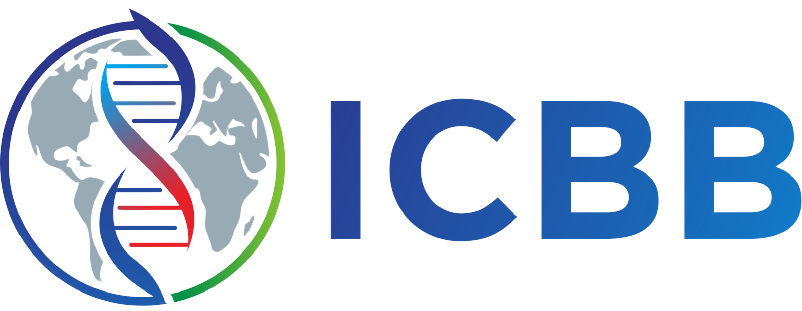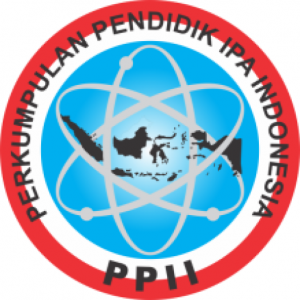Effectiveness of KCL and KNO3 Fertilization on Growth and Results of Two Melon Varieties (Cucumis melo L.)
Authors
Rina Fatimah Rahmawati , Muhammad Ridha Alfarabi Istiqlal , Herik Sugeru , Warip WaripDOI:
10.29303/jbt.v25i1.8209Published:
2025-01-21Issue:
Vol. 25 No. 1 (2025): Januari - MaretKeywords:
Melon, KCL, KNO3, plant growth, yield.Articles
Downloads
How to Cite
Downloads
Metrics
Abstract
The demand for fruits in Indonesia continues to increase along with the increase in public consumption. Melon is one of the fruits that requires intensive handling in its cultivation because it is vulnerable to environmental changes and diseases. This study aims to determine the effectiveness of adding KCL and KNO3 fertilizers on the growth and yield of two melon varieties. This study used a non-factor randomized complete block design (RCBD). There were four treatments consisting of a combination of fertilizers and melon varieties, namely P1 (KCL and new madesta varieties), P2 (KNO3 and new madesta varieties), P3 (KNO3 and glamour varieties), P4 (KCL, KNO3 and new madesta varieties), with 6 replications so that there were 24 experimental units. The results showed that P3 treatment gave the best results in stem diameter, number of leaves, early flowering age, fruit weight and fruit diameter. P2 treatment gave the highest average yield on the parameters of fruit flesh thickness and total soluble solids (PTT). P3 treatment has the potential for further research, P3 treatment can fulfill the expected criteria with the highest fruit weight of most treatments. The provision of alternative K sources did not give a real response to melon plants, thus it would be more efficient to use K sources that are more economical in the melon cultivation system carried out.
References
Ajitama, T. F., Susila, D. A., dan Suwarno, B. W. (2024). The Effects of Watering Volume and Topping on the Fruit Quality of Two Melon Varieties in a Substrate Hydroponic System. 11(2).
Alfy, M. N. T., & Handoyo, T. (2022). Pengaruh Dosis dan Waktu Aplikasi Pupuk KCl Terhadap Pertumbuhan dan Hasil Tanaman Buncis (Phaseolus vulgaris L.). Agriprima : Journal of Applied Agricultural Sciences, 6(1), 85–97. https://doi.org/10.25047/agriprima.v6i1.431
Aminuddin, M. I. (2014). Pengaplikasian Dosis Pupuk Bokashi Dan KNO3 Terhadap Pertumbuhan Dan Hasil Tanaman Melon (Cucumis melo L.). Saintis, 6, 119-130.
Amiroh, A. (2017). Pengaplikasian Dosis Pupuk Bokashi Dan KNO3 Terhadap Pertumbuhan Dan Hasil Tanaman Melon (Cucumis Melo L.). Saintis, 9 (Vol 9, No 1 (2017): Saintis), 25–36. http://journal.unisda.ac.id/index.php/Saintis/article/view/274
Ayu, J., Sabli, E., dan Sulhaswardi, S. (2017). Uji Pemberian Pupuk Npk Mutiara dan Pupuk Organik Cair Nasa terhadap Pertumbuhan dan Hasil Tanaman Melon (Cucumis melo L.). Dinamika Pertanian, 33(1), 103–114. doi.org/10.25299/dp.2017.vol33(1).3822
Badan Pusat Statistik Republik Indonesia. (2023). Produksi Tanaman Buah - buahan. Diakses pada 20 Desember 2023 di (bps.go.id).
Christy, J., Putri, L. A. P., dan Hanafiah, D. S. (2018). A Study of Hydroponic Melon Cultivations With Several Substrate Media and Varieties. Journal of Community Research and Service, 1(2), 92. doi.org/10.24114/jcrs.v1i2.9343
Daryono, B.S. dan S.D. Maryanto. 2018. Keragaman dan Potensi Sumber Daya Genetik Melon. Yogyakarta: UGM Press.
Ferdyansyah, B. (2022). Pengaruh Jenis Dan Dosis Pupuk Kalium Terhadap Pertumbuhan, Produksi Dan Kemanisan Buah Melon (Cucumis melo L.). Universitas Islam Riau, 44
Ginting, A. permana, Barus, A., dan Sipayung, R. (2017). Pertumbuhan dan Produksi Melon (Cucumis melo L.) terhadap Pemberian Pupuk NPK dan Pemangkasan Buah. 5(4), 786–798
Hendrajaya, W. 2018. Respon Pemberian KNO3 dan pupuk Agrodyke terhadap Hasil Buah Jeruk Siam (Citrus nobillis var microcarva L.). Skripsi. Program Studi Agroteknologi, Fakultas Pertanian, Universitas Warmadewa. 55 Hal.
Huang, J., S.S. Snapp. (2009). Potassium and boron nutrition enhance fruit quality in midwest fresh market tomatoes. Communications in Soil and Plant Analysis. 40: 1937-1952.
Kamaratih, D., dan Ritawati. (2020). Pengaruh Pupuk KCL dan KNO3 terhadap Pertumbuhan dan Produksi Tanaman Melon Hibrida ( Cucumis melo L.) Desti Kamaratih, Ritawati. 1(2), 48–55
Lester, G.E., J.L. Jifon, dan D.J. Makus. 2010. Impact of Potassium Nutrition on Postharvest Fruit Quality: Melon (Cucumis melo L.) Case Study. Plant Soil. 335 (1-2) : 117 – 131
Mustaqim, R., Armaini, A. dan Yulia, A.E. (2015). "Pengaruh Pemberian Kompos Tandan Kosong Kelapa Sawit Dan Pupuk N, P, K Terhadap Pertumbuhan Dan Produksi Tanaman Melon (Cucumis Melo L.)”." Jurnal Online Mahasiswa Fakultas Pertanian Universitas Riau, vol. 2, no. 2, pp. 1-13.
Nabiela, J., & Dwi, S. (2019). Pengaruh Komposisi Berbagai Macam Media Tanam Hidroponik Substrat terhadap Pertumbuhan dan Hasil Tanaman Melon ( Cucumis Melo L .) Effect of Various Composition on Hydroponic Substrate Growing Media on Growth and Yields of Melon ( Cucumis melo L .) Plants. Jurnal Produksi Tanaman, 7(12), 2352–2357.
Nora, S., Yahya, M., Mariana, M., Herawaty, dan Ramadhani, E. (2020). Teknik Budidaya Melon Hidroponik dengan Sistem Irigasi Tetes (Drip Irrigation). Jurnal Agrium, 23, 21-26.
Parmila, I. P., Prabawa, P. S., Suarsana, M., dan Suwardike, P. (2023). Pemberian Dosis Biourin Sapi dan Pupuk Magnesium Sulfat dalam Meningkatkan Pertumbuhan dan Kualitas Buah Melon (Cucumis melo L.) Varietas Golden Yurika. Jurnal Pertanian Agros, 25, 2190-2201.
Pettigrew, W.T. 2008. Potassium influences on yield and quality production for maize, wheat, soybean and cotton. Physiologia Plantarum. 133: 670-681.
Pratomo, A. Y. (2020) Pengaruh Perbedaan Dosis Aplikasi Pupuk KNO3 terhadap Pertumbuhan Tanaman Melon (Cucumis melo L.), Malang, Indonesia. https://repository.ub.ac.id/id/eprint/181104/6/Ari%20Yulianto%Pratomo.pdf (Accessed on august 20, 2024)
Ramadani, T., Jumini, dan Nurhayati. (2022). Pengaruh Dosis Kompos dan KNO3 Terhadap Pertumbuhan dan Hasil Tanaman Melon (Cucumis melo L.). Jurnal Ilmiah Mahasiswa Pertanian, 7(1): 1-8.
Rosmarkam, A. dan N. W. Yuwono. (2002). Ilmu Kesuburan Tanah. Yogyakarta(ID): Kanisius.
Rubatzky, V.E., M. Yamaguchi. 1977. World Vegetables: Principles, Production, and Nutrivive Values 2nd ed. New York: Chapman Hall, International Thompson Publishing.
Shintarika, F., dan Wahida, S. N. (2022). Pengaruh Dosis Pupuk KNO3 terhadap Kadar Gula pada Tiga Varietas Melon di BPP Lampung. Jurnal AgroSainta, 1-8.
Sholihatin, R., Yakop, U. M., dan Haryanto, H. (2020). Evaluasi Ketahanan Beberapa Genotipe Hasil Persilangan Blewah (Cucumis melo var cantalupensis) dengan Melon (Cucumis melo) terhadap Hama Kumbang Daun (Aulachopora sp.). Crop Agro, 13(2), 146–163
Sobir, F.D. Siregar. 2014. Berkebun Melon Unggul. Jakarta (ID): Penebar Swadaya. Sudarmadji, S., B. Haryono, Suhardi. 2007. Analisa Bahan Makanan dan Pertanian. Yogyakarta. Liberty Yogyakarta.
Sugiartini, E., Rusmana, Hilal, S., Feronica, A. C. I., dan Wahyuni, S. E. (2022). The Response of AB Mix Utilization on Growth and Yield of Several Melon Varieties ( Cucumis melo L.) in Hydroponic Drip Irrigation System. IOP Conference Series: Earth and Environmental Science, 978(1). doi.org/10.1088/1755-1315/978/1/012026
Sundari, T., Johari, A., dan Kartika, W. D. (2018). Keanekaragaman Jenis Ordo Coleoptera pada Pertanaman Sayuran di Kecamatan Jambi Selatan Kota Jambi. Repository Universitas Jambi, 1–13. https://repository.unja.ac.id/3937/
Suwanti, J., Susilo, M., dan K., P. W. 2017. Respon Pembungaan dan Hasil Tanaman Nanas (Ananas comosus L.) Merr) cv. Smooth Cayenne terhadap Pengurangan Pemupukan dan Aplikasi Etilen. Produksi Tanaman, 5(8), 1364-1355.
Widowati, Asnah, dan Sutoyo. (2012). Pengaruh Penggunaan Biochar Dan Pupuk Kalium Terhadap Pencucian Dan Serapan Kalium Pada Tanaman Jagung. Buana Sains, 12(1), 83–90.
Wardhani , S.K. I. Purwani, dan W. Anugerahani. 2014. Pengaruh aplikasi pupuk hayati terhadap pertumbuhan dan produktivitas tanaman cabai rawit (Capsicum frutescenes L.). Jurnal Sains dan Seni Pomits. 2 (1):2337-3520.
License
Copyright (c) 2025 Rina Fatimah Rahmawati, Muhammad Ridha Alfarabi Istiqlal, Herik Sugeru, Warip Warip

This work is licensed under a Creative Commons Attribution 4.0 International License.

Jurnal Biologi Tropis is licensed under a Creative Commons Attribution 4.0 International License.
The copyright of the received article shall be assigned to the author as the owner of the paper. The intended copyright includes the right to publish the article in various forms (including reprints). The journal maintains the publishing rights to the published articles.
Authors are permitted to disseminate published articles by sharing the link/DOI of the article at the journal. Authors are allowed to use their articles for any legal purposes deemed necessary without written permission from the journal with an acknowledgment of initial publication to this journal.


























